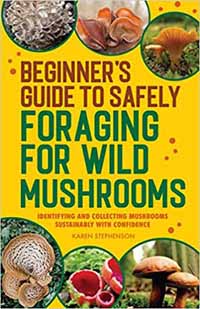

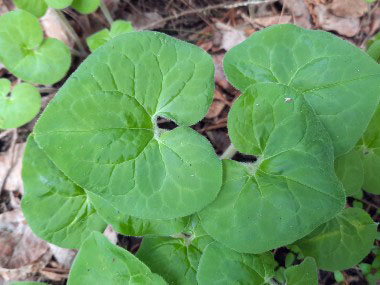
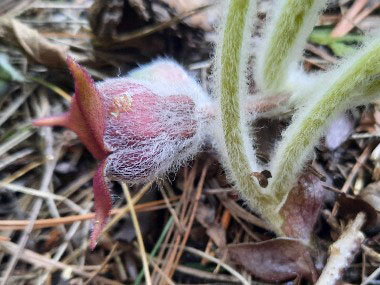
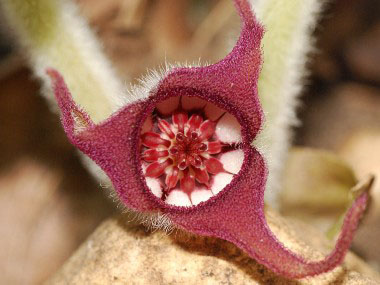
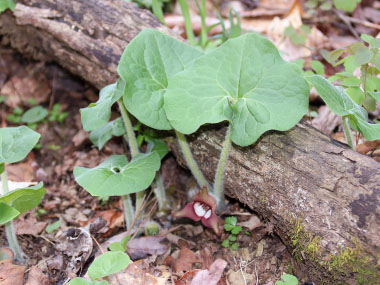
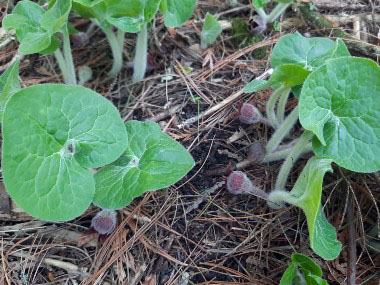
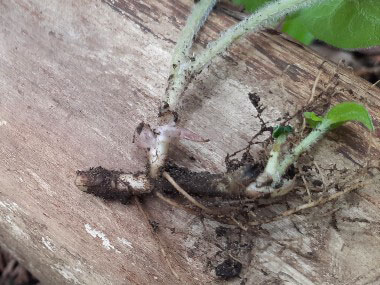
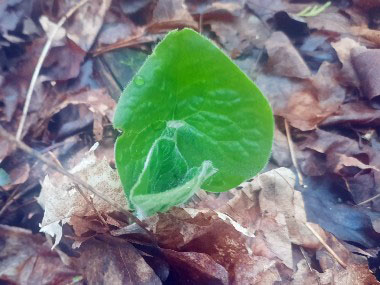
To support our efforts please browse our store (books with health benefits, etc.).
Wild Ginger is a perennial plant in the Aristolochiaceae (Birthwort) family. It tends to grow in colonies, spreading vegetatively through spreading rhizomes. There are two species of wild ginger native to North America: Asarum canadense in the East and Asarum caudatum in the West. Both have matte green, heart-shaped leaves and spread steadily. Wild Ginger is not related to the commercially purchased ginger (Zingiber officinale).
Distinguishing Features
This plant grows very low to the ground and has heart-shaped leaves. The flowers are unusual in that they grow at soil level, tucked underneath the plant’s leaves. In early spring, push the foliage aside and check the base of the plants to find the dark, three-pointed blooms. This ground-hugging plant spreads by rhizomes that send up kidney-shaped or heart-shaped leaves.
Flowers
The flower is tubular or bowl-shaped with three dark red to brown triangular petal-like sepals with elongated tips. The tube is 3/4 to 1 inch across; the flower is up to 2 inches across from tip-to-tip. The inside of the tube is creamy white. In the center there are 12 stamens around the 6 reddish brown styles. The outside of the tube is covered in white hairs, especially near the base. One plant has a single flower that lies on the ground at the base of the plant.
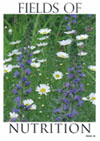 Fields
of Nutrition has medicinal benefits and vitamin/mineral content of Wild Ginger.
Fields
of Nutrition has medicinal benefits and vitamin/mineral content of Wild Ginger.
Leaves
Each plant has a pair of basal leaves on stalks up to 15cm (6") long. Leaves are heart to kidney shaped with a pointed or rounded tip and a deep cleft at the base. The underside is densely covered in soft hairs. The leaf stalks are gray-white, also densely covered with soft white hairs. Mature plants have leaves that measure 15 to 18cm (6 to 8") long and wide, but are less than half that size when the plant first blooms. When leaves first emerge they are folded up and flat like a book, but unfurl within a couple days.
Height
This is a low-growing plant that sometimes may be covered by leaf litter. It is usually 10cm (4") tall.
Habitat
Wild ginger is found in rich, moist forests throughout eastern and western U.S. and Canada. round-hugging plant with rhizomes that send up kidney-shaped or heart-shaped.
Edible Parts
Late fall and early spring are the best times to harvest wild ginger, when the plants are dormant. At this point in their growth cycle, disturbing the root system won’t hurt the plant, but digging them up while the plants are in active growth could do some damage.
Other Name
Canada Wild Ginger.
Winter Survival Food Handbook

PDF Plant Magazines
Types of Wild Food
Geographic Zones Seasons
Disclaimer
EdibleWildFood.com is informational in nature. While we strive to be 100% accurate, it is solely up to the reader to ensure proper plant identification. Some wild plants are poisonous or can have serious adverse health effects.
We are not health professionals, medical doctors, nor are we nutritionists. It is up to the reader to verify nutritional information and health benefits with qualified professionals for all edible plants listed in this web site. Please click here for more information.
Why Edible Wild Food?
- Food costs are rising
- Free, wild food is readily abundant
- Wild food adds nutrition to your diet
- Wild food can help treat various medical conditions





